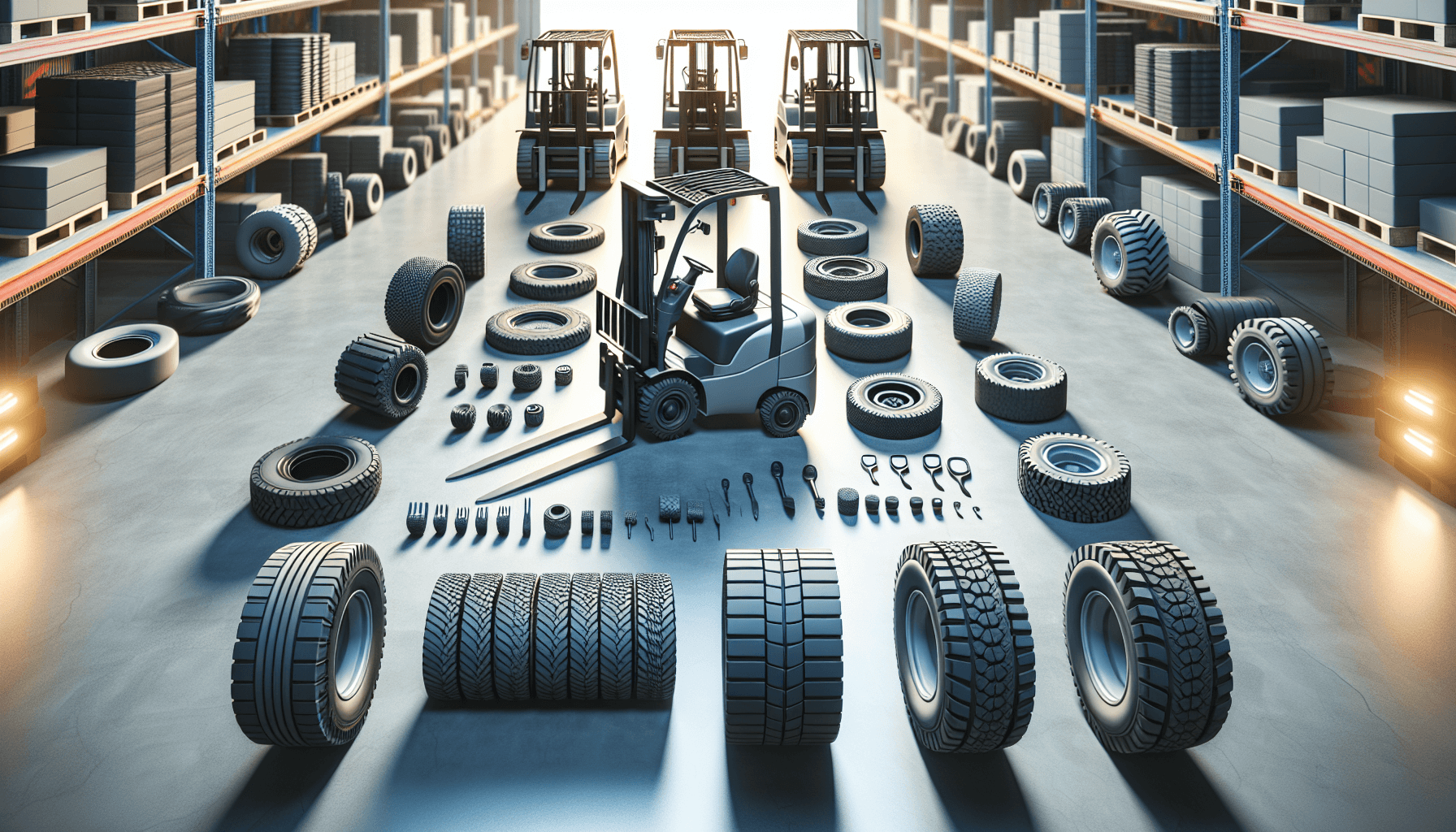If you own or manage a fleet of forklifts, one of the most important considerations is choosing the right tires for your machines. Forklift tires play a crucial role in the performance, safety, and efficiency of your equipment. The wrong tires can lead to increased downtime, reduced productivity, and unnecessary costs.
Why Choosing the Right Forklift Tires is Important
Before delving into the process of choosing the right forklift tires, let’s discuss why it is important to make the right selection:
- Safety: The right tires are essential for ensuring safety in your operation. Different types of tires offer varying levels of traction and stability, which are crucial for preventing accidents and minimizing the risk of tip-overs.
- Productivity: Choosing tires that are suitable for your application can significantly impact the productivity of your forklift fleet. The right tires can help improve maneuverability, reduce tire wear, and enhance overall efficiency.
- Cost-efficiency: Opting for the right forklift tires can save you money in the long run. Tires that are well-suited for your application and working conditions will last longer, require less maintenance, and minimize the need for frequent tire replacements.
- Operator Comfort: The right tires can contribute to the comfort of the forklift operator. Certain types of tires offer better shock absorption and noise reduction, providing a smoother ride and reducing operator fatigue.
Now that we understand the importance of choosing the right forklift tires, let’s dive into the factors you need to consider:
Tire Type
The first step in selecting the right forklift tires is determining the appropriate tire type for your specific application. The two main options are:
- Pneumatic Tires: Pneumatic tires are similar to car tires and are filled with air. They provide excellent traction and are suitable for outdoor applications or uneven surfaces. Pneumatic tires can handle rough terrain, debris, and even small obstacles. However, they are not recommended for indoor use on smooth warehouse floors.
- Cushion Tires: Cushion tires are made of smooth rubber and are ideal for indoor use on smooth surfaces such as concrete or asphalt. They offer better stability, maneuverability, and are more cost-effective compared to pneumatic tires. However, cushion tires are not designed for outdoor use or rough terrain.
Your choice between pneumatic and cushion tires will depend on your specific working environment, whether it’s primarily indoor or outdoor, the type of surface, and the nature of the loads you handle.
Tire Tread
Another crucial consideration when choosing forklift tires is the tread pattern. The tread pattern affects traction, stability, and the ability to grip different surfaces. Here are the main tread options:
- Smooth Tires: Smooth tires have no tread pattern and are generally used for indoor applications on clean, flat surfaces. They provide better maneuverability and are ideal for warehouses or manufacturing facilities with smooth concrete floors.
- Traction Tires: Traction tires feature a lug tread pattern that provides excellent grip on loose or uneven surfaces. These tires are suitable for outdoor applications, especially in areas with gravel, dirt, or snow.
- Ribbed Tires: Ribbed tires have a ribbed or semi-smooth tread pattern that offers a balance between smooth tires and traction tires. They provide a moderate level of grip and are often used in light-duty indoor applications or on surfaces where some traction is necessary.
Consider the surfaces your forklifts will operate on and the type of loads they will handle when choosing the tread pattern. This will ensure optimal performance and safety in your particular operating conditions.
Load Capacity and Tire Size
The load capacity of your forklifts and the tire size are interconnected factors that must be considered together. The tires should be capable of supporting the maximum load capacity of the forklifts while ensuring stability and balance. Using undersized or oversized tires can cause instability, premature tire wear, and potential damage to your equipment.
Refer to the forklift manufacturer’s specifications or consult with a professional to determine the correct tire size and load capacity for your specific forklift models.
Consider Your Operating Environment
Lastly, when selecting forklift tires, consider the operating environment and the conditions your forklifts will encounter. Factors to consider include:
- Indoor vs. Outdoor: Determine whether your forklifts will primarily be used indoors or outdoors. This will help you decide between cushion tires (indoor) and pneumatic tires (outdoor).
- Surface Conditions: Assess the condition of the surfaces your forklifts will operate on. Determine if they are smooth, uneven, or require special tires (such as non-marking tires for clean, finished floors).
- Climate: Consider the climate and weather conditions your forklifts will be exposed to. Extreme temperatures, rain, snow, or ice may require specific tire types for optimum performance and safety.
Overall, it is crucial to select forklift tires that are designed to withstand the specific demands of your operating environment while maximizing performance, safety, and efficiency.
If you need assistance selecting the right forklift tires or managing your forklift fleet efficiently, consider reaching out to a reliable forklift fleet management provider like HCO Innovations. They offer expert guidance and solutions to optimize your fleet’s performance, including tire selection, maintenance, and overall fleet management. Click here to learn more about their services.
In conclusion, choosing the right forklift tires is crucial for the safety, productivity, and cost-efficiency of your fleet. Consider factors such as tire type, tread pattern, load capacity, tire size, and operating environment to make an informed decision. Taking the time to assess these factors and consult with experts will ensure that your forklifts are equipped with the most suitable tires for your specific needs.

